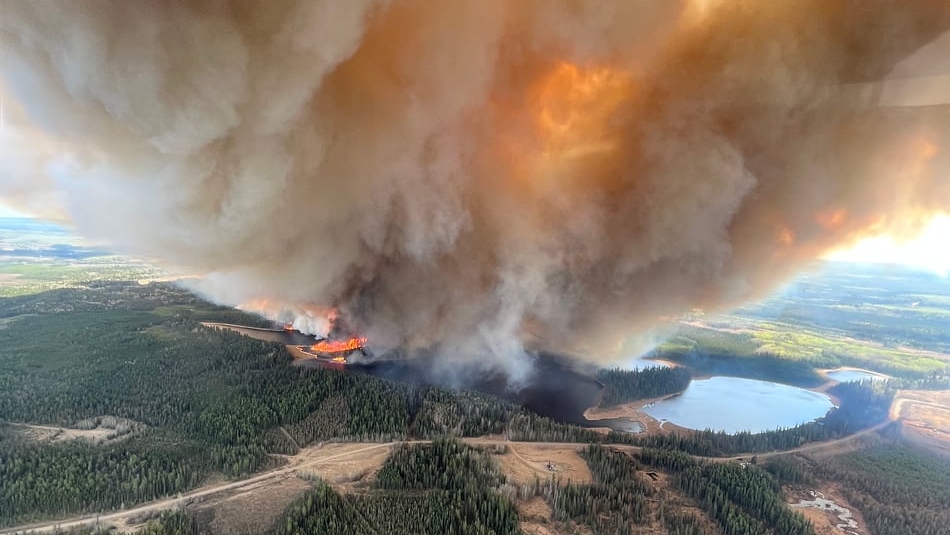148 wildfires extinguished in Alberta in 2024 so far, 50 still burning

According to the minister of forestry and parks, Alberta is experiencing “heightened wildfire risk” this year, with 148 fires already extinguished and more still burning.
“To date in 2024, we have had more wildfire starts than we had in 2023,” said Minister Todd Loewen. “All wildfires are currently being held under control or are extinguished.
“Early season hiring and increased preparedness has enabled us to come at this wildfire season very strongly.”
As of Thursday, there were 50 wildfires burning in Alberta, according to Christie Tucker with Alberta Wildfire. Four of those fires are being held and the other 46 are considered under control.
The four fires being held are in “fairly remote areas” and not close to communities or highways, according to Loewen.
There were still 64 wildfires burning from last year at the start of 2024, Tucker said, and more than 500 hectares have burned since January.
“That’s about 400 hectares more than we had at this time last year,” Tucker said. “We’re hoping for more precipitation to come, but we’re prepared for what will happen if it doesn’t.”
Water is a worry this year, with the warmer than average winter and lakes still frozen, hampering crews’ ability to fill water skimmers.
“Any situation that we have where we feel like we won’t have readily available water, we’re working on water contracts to make sure that water can be trucked in, tanked into to help us with those responses,” Loewen said.
Over the past five years, 67 per cent of wildfires in the province have been caused by people. Tucker said the majority of the current wildfires were caused by humans.
“When people think about human-caused wildfires, they generally think about fires that have been deliberately set,” Tucker said. “But the vast majority of human-caused fires happen unintentionally, just by people being out and about in our forested areas.”
This includes burning in residential areas, not putting out campfires well enough and industrial activities in forested areas, she added.
“To reduce wildfire risk this spring, I started the official wildfire season early and we are using fire restrictions and fire advisories across Alberta as the fire risk increases,” Loewen said.
“These are critically important tools to reduce the number of human-caused wildfires.”
Three per cent of fires in 2023 were caused by mischief and 8 per cent were found to be arson, according to Tucker.
On top of regular staff, Alberta has 297 government wildland firefighters, 280 fire attack firefighters and 172 seasonal support staff.
“Many people saw the devastation last year near their communities and near their homes and businesses and they want to help, which is something that we want to facilitate,” Tucker added.
“We’ve had dozens of applications from members of the public and of course people who have equipment that they can contribute to us.”
Municipalities want wildfire training
Wildfires outside of protected forest areas, inside county lines, are handled by local fire departments.
Earlier in 2024, municipalities asked the province for access to additional wildland and wildfire attack training.
Efforts to extinguish 2023 wildfires continue, even as preparation is done for 2024
“Municipalities have been requesting to be able to access that training so that there’s joint training between the experts within the wildland fire zones as well as the municipalities, so that if the fires move between wildland areas and municipalities, the communication and the understanding of that training is already done,” said NDP MLA Heather Sweet.
Tucker said Alberta Wildfire has made online training available to communities outside the forest protection area.
“To ensure that they have the same base understanding of wildland firefighting, to share the knowledge and help us all work more closely together,” she added.
Starting with Thursday’s announcement, there will be weekly wildfire updates.
Sweet is calling for the emergency response team to be present at the weekly updates.
“I have heard from industry, municipalities and Indigenous communities that they have not heard from this government about what the plans are in case of evacuation and supports to protect their communities,” Sweet said.
“It’s about that openness and transparency by the government to ensure that people understand that if those plans are being worked on, what does that look like.”
The minister encouraged Albertans to download the Alberta Wildfire and Alberta Fire Ban apps.
There are also grants available to help Albertans protect their property against wildfire.
“We have a potentially long season ahead of us and we need to work together to prevent wildfires,” Tucker said. “There have been a lot of communities that have taken advantage of fire smart grants, and have worked together over the years in order to help build fire guards to their community, to help reduce hazards near their homes, to make changes to their individual homes that will build resilience to wildfire, and that’s certainly something that everyone should consider.”
For more information on fire safety, visit the Fire Smart website.
View original article here Source









